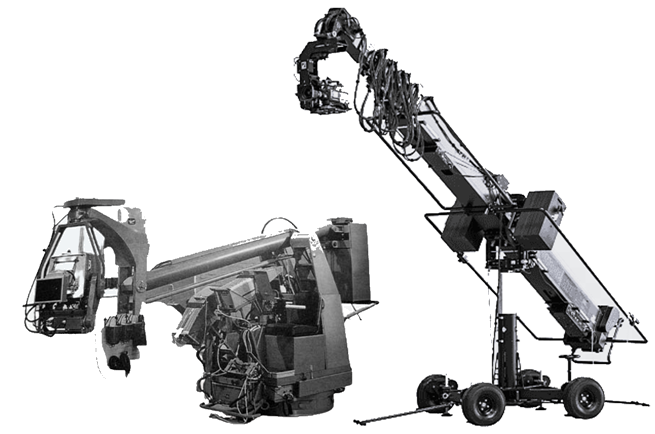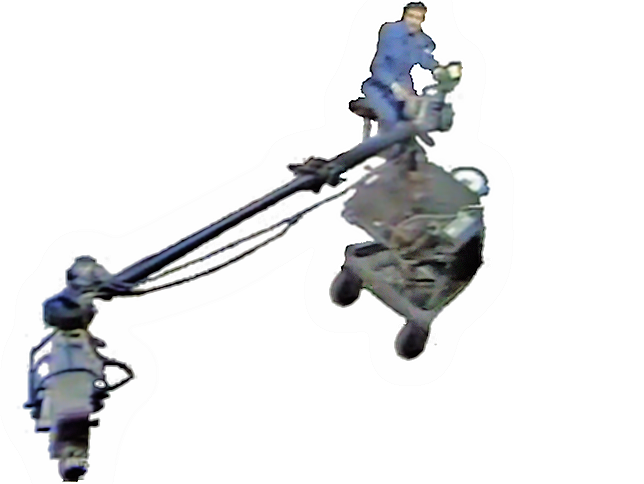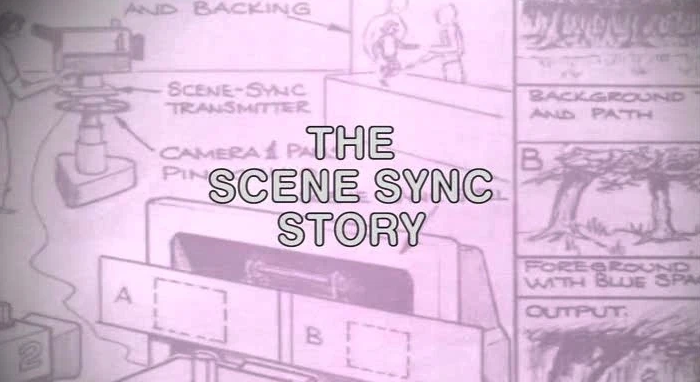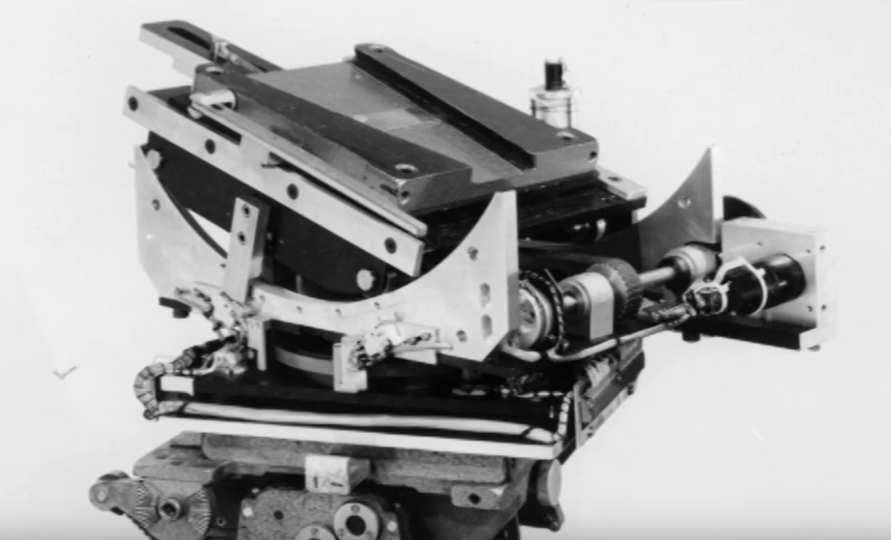As technology evolves, thing which were difficult to achieve – 0r impossible to achieve – become easier to accomplish – and offer new challenges….
Alec Bray
[Looking at] Alan’s comments about Glasto and the use of a Technocrane…. [see this page]:

[
Compare the Peregrine (see this page) with a Technocrane.]
Time and technology marches on – some 60 odd years, in this case – but the concept is pretty much the same: Long arm, camera on end with mounting offering (a total of) three degrees of freedom, camera operator remote from camera.
Technocranes don’t have to cope with the heavy old 4.5-inch IO cameras! Look at that tiny little camera!!
Perhaps we should regard the Peregrine as the BBC/Vinten equivalent of Leonardo’s helicopter….
Bernie Newnham
And, of course, there was BoomCam

Alan Taylor
I assumed people were a little more familiar with Technocranes, so only mentioned it almost in passing.
“Technocrane” seems to be a generic term and there are a number of different types. What I think of as the standard one will lift a camera about fifty feet in the air and will fully extend in about 5-6 seconds. A massive counterbalance is driven up and down at the other end. The camera itself is controlled by a hot head.
I’ve worked in a studio with one which was much smaller, but the hot head was controlled by a targeting computer, which once you specify who to follow and what framing you want, will frame and focus automatically while the operator concentrates on swinging the crane. It was uncannily effective, even if you move the jib differently from the last take.
At the other end of the scale I’ve been told about hundred foot versions, but have never seen one in the flesh. I wouldn’t be surprised if they keep making bigger ones, just as Simon Hoists have gone from pretty high, then ridiculously high, and now unfeasibly high.
Some have booms made from open tubular metal, rather like trussing, while others have rectangular section telescoping mechanisms like a Simon Hoist.
They don’t have to be kept on a static base; they are often mounted on tracks. Movies sometimes use a Technocrane mounted in a vehicle and driven at comparatively high speeds.
There are a lot of videos online showcasing different types of Technocranes. One which was shot at the Panavision depot shows familiar landmarks for those who travel along the A40 near Greenford.
Hugh Snape
Here’s the products page from the SuperTechno site.
Paul Thackray
I suppose it depends where you are looking from as to whether Technocranes are new technology. They have been around for more than 35 years, which is almost as long as most careers! They were in use at BBC TVC in mid or late 1980s alongside the Nike and Mole.
It was pre-CCD cameras, so would have an Ike 79D on it to try and match with the Link 125s and 110s.
Dave Plowman
Won’t be long ’till drones take over from them. 😁
Graeme Wall
Not over crowds.
Dave Plowman
Perhaps. Am I right in remembering that at one time you couldn’t swing a Mole arm etc over the audience?
Graeme Wall
Orchestras, on the other hand, were fair game!
John Vincent
Some fixed ultra-HD cams left and right and high and low. Some mind-blowing computing can get any camera angle so Director can get whatever shots he wants post.
Don’t know about sound though. Perhaps some sort of micro chipping of artists and the computer does the rest according to shots selected!
Lighting the same.
Gets rid of all those technical prima donnas!
Nick Ware
I’ve always said it would be good if all presenters were fitted with an XLR output on their ankles. There’s one I can think of who must already have had one up the derrière, but I thought it best not to ask.
I remember doing a 3D film studio shoot where two big cranes on tracks were synchronised to track, pan, and tilt exactly in sync. That was a long time ago, 35mm and early days of computing. Any suggestions as to what that might have been for? Also, synchronised zooms on LE shows – does that ring a bell?
Graham Maunder
GAZE??? Ganged Auto Zoom Equipment???
Dave Buckley
The system Nick remembers is GAZE = Ganged Angenieux Zoom Equipment.
Early in my time with TV Training Department, one Directors’ course had a day in a Television Centre studio being shown a range of ‘auxiliary’ equipment including GAZE, multi-facet lenses and VLAD = Vinten low-angle dolly.
Dave Mundy
When CSO first started we had a set-up in TC6 on “The Musical Time Machine” (with Stewart Morris (RIP!), Vince Hill and the Nolans) where we had two peds linked together, on one camera were the artistes and on the other a scenic picture and in the studio was a green cyc. It seemed to work OK but eventually the cycs. became blue.
I think the set-up in TC6 was called ‘Scene-Sync’.
Dudley Darby
Yes, Dave, it was Scene-Sync, used on “The Borgias” too. I think it was developed by Reg King at Evershed Power Optics; he also operated it. Reg was previously with Mole Richardson and was involved in designing the steering platform for the Mole Crane to make it more TV-friendly.
Alec Bray
There is a short excerpt from “The Scene Sync Story” on YouTube
Produced by John Kelly, the clip includes interviews with two camera operators, Peter Leverick and Roger Bunce, along with visual effects designer, Stephen Drewett.

Scene Sync slave camera mounting:

Is this similar to the system used in film to match the camera shot on models to the shot of real actors – although in films the two camera moves are not simultaneous… for example, this technology was used in “Titanic”.
From the book of the making of the film –

[Transcript]
“… Instead, the actors now stand on the bow of the ship as it floats in a green-screen void. When they embrace, the whine of electric servomotors kicks in and the motion-controlled camera retraces its exacting path. (The move was originally executed over the 1/20th-scale model of the ship and then scaled up to photograph the actors). While everything around them is artificial, Leo and Kate’s kiss is very real…”
James Cameron’s Titanic 1998 Boxtree



